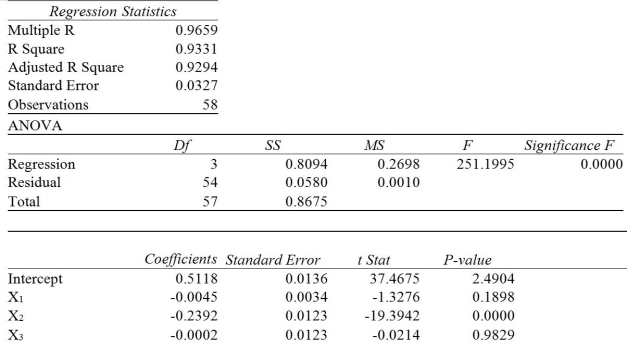TABLE 13-12
As a project for his business statistics class, a student examined the factors that determined parking meter rates throughout the campus area. Data were collected for the price per hour of parking, blocks to the quadrangle, and one of the three jurisdictions: on campus, in downtown and off campus, or outside of downtown and off campus. The population regression model hypothesized is
Yi = α + β1X1i + β2X2i + β3X3i + ε
where
Y is the meter price
X1 is the number of blocks to the quad
X2 is a dummy variable that takes the value 1 if the meter is located in downtown and off campus and the value 0 otherwise
X3 is a dummy variable that takes the value 1 if the meter is located outside of downtown and off campus, and the value 0 otherwise
The following Microsoft Excel results are obtained.

-Referring to Table 13-12, predict the meter rate per hour if one parks outside of downtown and off campus three blocks from the quad.
Definitions:
Agonist
A chemical that binds to a receptor and activates it to produce a biological response.
Paralysis
The loss of muscle function in part of your body, often resulting from damage to the nervous system.
Long-Term Potentiation
Long-Term Potentiation is a long-lasting increase in signal transmission between two neurons, leading to a stronger synaptic connection.
Neural Excitability
The ability of neurons to react to stimuli and convert them into nerve impulses, crucial for processes such as sensory perception, motor control, and cognitive functioning.
Q2: Referring to Table 14-5, the best estimate
Q38: Who are the key players in setting
Q42: Which of the following type of program
Q53: Referring to Table 11-6, what is the
Q65: Referring to Table 11-2, the p-value of
Q68: Referring to Table 13-15, what is the
Q173: The sample correlation coefficient between X and
Q225: Referring to Table 13-17 Model 1, we
Q269: Referring to Table 13-2, an employee who
Q278: Referring to Table 13-10, the standard error